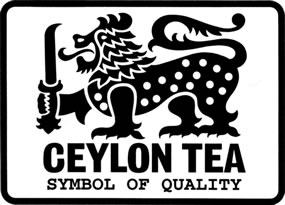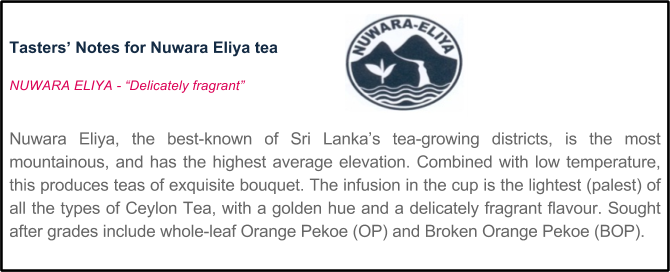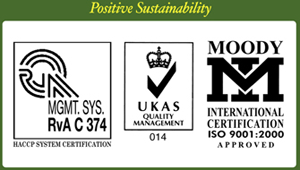This story begins in 1867 with the arrival of a young 17 year old named James Taylor and settling down in the Loolecondera Estate,Galaha. With the knowledge he gained during the time he spent in India, James Taylor started a 19-acre tea plantation which would eventually become Sri lanka’s largest export industry. In 1873 for the first time, the world(especially the British) get to know this new brand called Ceylon Tea as 23 pounds of tea produced in Sri Lanka reached London and the rest as they say is history!

Not every tea can be called “Ceylon Tea”. There is a well defined legal definition describing the necessary criterias, which is given by Sri Lanka Tea Board and only when those are fulfilled will it be called “Ceylon Tea” get that iconic Lion Logo.
To qualify for the special, legal distinction denoted by the words ‘Ceylon Tea’, and for the famous Lion logo that goes with it, the tea must not only be grown and manufactured entirely in Sri Lanka; it must also conform to strict quality standards laid down and administered by the Sri Lanka Tea Board. It cannot, moreover, be mixed or blended with tea from any other part of the world. Even a blend that is 95% Sri Lankan cannot be described as Ceylon Tea.
Since the Lion Logo was mentioned, here is the story behind the logo according to the Sri Lanka Tea Board:
Indivisibly associated with the Ceylon Tea brand is the famous Lion of Ceylon logo, found only on packages of pure Ceylon tea packed in Sri Lanka prior to export. The logo is based on the Lion of Ceylon, an ancient heraldic device which decorates the national flag of Sri Lanka. It was first adopted by the Tea Propaganda Board, one of the precursors of the present Tea Board, and is a registered trademark in over a hundred countries around the world.

In 1892, James Taylor, the pioneer of the tea industry in Ceylon, died at the age of 57, leaving behind an Industry that would help Sri Lanka make a name as one of the worlds’ finest tea manufacturers.

By 1932, the Ceylon Tea Propaganda Board was established and it took the responsibility of overlooking the standards of the Tea Industry. The board prescribed high standards to prohibit the export of inferior quality tea. The world’s largest tea bush, which yielded four pounds of tealeaf in a day, was found in Ceylon in 1934. Furtherore, Ceylon became a founding member of the International Tea Market Expansion Board (ITMEB).
It was a long journey of 99 years but 1965 is a memorable year for this story as it is the year we became the Largest Tea Exporter in the world ! One year after that, the 1st International Tea Convention was held to celebrate 100 years of Ceylon Tea.
By 1980 Ceylon Tea displayed it’s strong brand presence and International domination by becoming the Official Tea Supplier for the Moscow Summer Olympics and also in 1982 for the Brisbane Commonwealth Games.
The famous Lion Logo trademark was established in 1999 which, as described above, would be the emblem of 100% Pure Ceylon Tea.

In 2008 Ceylon Tea reached another historic milestone as it grew the export revenue to USD 1 billion, showcasing its significance as one of the main driving forces of Sri Lankan Economy!
150 years since the first tea estate was started by James Taylor,Ceylon Tea is renowned for its high quality tea and as the 2nd biggest tea producing country globally. Sri Lanka has a production share of 10% in the international sphere, and is one of the world’s leading exporters with a share of around 23% of the global demand.
CHARACTERISTICS OF SRI LANKAN TEA
Similar to Coffee, Tea also has different characteristics and it differs from country to country as well a within a country too. Sri Lanka’s inherited geographical variations mean that we would be able to produce a variety of tea with unique characteristics not only in the Hill Country, but also in other places as well.
Sri Lanka mainly produced orthodox teas. In the orthodox process of production, semi dried green shoots are ruptured and twisted by “rolling” achieved from a rotary movement. When tea leaves are crushed, an oxidation process begins, which is followed by “firing” and commonly known black tea is produced. Sri Lanka also produces tea by unorthodox methods, namely Cut Tear and Curl (C.T.C).
Green tea, Instant tea, Bio tea, and flavored tea are also produced in Sri Lanka. High grown teas from Sri Lanka are reputed for their taste and aroma. The two types of seasonal tea produced in Dimbula and Nuwara Eliya are much sought after by blenders in tea importing countries.
There are three major geographical zones for tea cultivation in the country and the production of each cultivation has unique features in it.
High/Upcountry: Above 1,200 m.
• Nuwara Eliya – Delicately fragrant
• Udapussellawa – Exquisitely tangy
• Uva – Exotically aromatic
• Dimbula – Refreshingly mellow
Mid-Country: Between 600 m. – 1,200 m.
• Kandy – Intensely full-bodied
Low-Country: Below 600 m.
• Sabaragamuwa – Smooth & full-bodied
• Ruhuna – Distinctively unique
Uva teas from Eastern Highlands contain unique seasonal characters and are widely used in many quality blends particular in Germany and Japan. The medium grown teas provide thick coloury varieties which are popular in Australia,Europe, Japan and North America. The teas produced in low grown areas are mainly popular in Western Asia, Middle Eastern countries and CIS and BRICS countries. Most factories in these areas produced what are known as “leafy grade of tea” where the tea leaves are well twisted and can grade into long particles.

Wonder why Ceylon Tea is renowned around the world? Here is the guide to Ceylon Black, Green and White Tea. You heard correctly, white tea exists too!
Ceylon Black Tea
For over a century Ceylon Black tea has been one of the most famous and well loved teas around the world. The process of manufacturing Black tea includes withering of the plucked leaves to reduce its moisture content by approximately 50%. Thereafter the leaves are rolled by mechanical tea rollers to separate and break them into parts. This process of breaking up the leaves leads to a chemical reaction that is catalyzed by the enzymes in the leaf. Ceylon Black tea is the most oxidized variety and contains more caffeine than the rest of the varieties. Black tea is best grown in a climate that is hot and moist where the temperature does not exceed 95 degrees Fahrenheit and does not fall below 55 degrees Fahrenheit. As a result of being close to the equator the climatic conditions of Sri Lanka is ideal to grow and produce Black tea. Tea is grown in numerous estates around the country which vary in altitude thus giving it distinctive qualities. High grown tea has a honey golden liquor that is light and considered to be one of the best tasting teas around the world due to its well-defined flavor, aroma and strength. Low grown tea has a burgundy brown liquor and a flavor which is rather strong. Mid grown teas have a strong, rich and full-bodied flavor.
Ceylon Green Tea
The reputed quality of Ceylon Tea has rapidly grown to include green tea to its mix. Like black tea, tealovers around the world are in the process of discovering the joys of green tea. The Ceylon Green Tea Industry, though very young, is growing rapidly as the product has garnered a popularity among tea drinkers around the world. The main export markets of Ceylon Green Tea are the Middle East and the Soviet Union, sales are also rapidly improving in Europe, North America and East Asia. Green Tea is rich in antioxidants as it is processed differently, which helps it to retain its nutrients that are ultimately beneficial to your health. Ceylon Green tea has a fuller body with a rather pungent and malty, nutty flavor to it. Today Ceylon Green Tea is manufactured in a number of estates in mid-grown and high-grown districts. Among the varieties of green tea produced in this estates are the Longevity Tea, Rolled Gunpowder Tea, Green Tea Fannings and Sencha Fannings. Ceylon Green teas have characteristics that differentiate them from the rest of the green teas produced around the world, they tend to be darker in both dry and infused leaf and contains a rather rich flavor.
Ceylon White Tea
Ceylon white is also produced from the same plant as the black and green tea, though the plant has slight differences to it. The leaves and buds are left to wither in natural sunlight and thereafter, they are lightly processed to avoid oxidation, this results in white tea being the least processed tea of all and is abundant with health benefits. Ceylon white is is famously known as “Silver Tip”. This is due to the color it transforms into after the manufacturing process. It is also one of the most expensive teas in Sri Lanka. The tea was first grown in Nuwara-Eliya. Ceylon White tea is famous among tea lovers for its mild and sweet flavor, as it has a delicate, very light liquoring with notes of pine and honey and a golden coppery infusion.

Ceylon tea is well know for the sustainable measurers it has taken to improve the Ecosystem involved with Ceylon Tea, from plantation to manufacturing and to exporting, Sri Lanka Tea Board has taken every step to produce an ethical and sustainable product. According to Sri Lanka Tea Board here’s how they do it :
A tradition of sustainable forestry
Although the central mountains of Sri Lanka were thinly inhabited in ancient times, historical authorities state that forest conservation was practiced under the Sinhalese kings who ruled the island in those days. Its purpose was to preserve local ecosystems which ensured that the monsoon winds would shed most of their moisture in these mountains as rain, and that this rainfall should run freely down natural watercourses in the mountains to reach reservoirs built among the foothills.
Hence, the water would be channeled through a network of canals and naturally-occurring streams to fill the vast artificial reservoirs or tanks that irrigated the rice-fields of the central and southern plains of ancient Lanka. The remains of ancient hydraulic works are still found at various locations in the hill country.
Preserving the forests
Above the estates of the Sabaragamuwa tea-growing district lies the Sinharaja, a tract of high-altitude rainforest that is home to hundreds of species of plant and animal found nowhere else in the world. Apart from its natural treasures, the Sinharaja forest also has important climatic effects on the surrounding countryside. Other high-altitude ecosystems, such as the Hakgala forest reserve in Uda Pusselawa district, Horton Plains and the Peak Wilderness around Adam’s Peak, are also essential elements in the web of climatic and ecological interactions that give Ceylon Tea its unique character.
Tea planters have long understood the importance of preserving the forests that lie above the tea, and a considerable part of the labour of running a tea-estate is dedicated to this task. To an experienced planter, the condition of the surrounding forests is one of the marks by which a well-run tea plantation is judged.
Today, when climate change is a reality experienced daily and deforestation is a worldwide issue, the emphasis on forest conservation in the Ceylon Tea industry is stronger than ever. It is, in fact, part of a wider concern for environmental issues relating to tea cultivation, such as competition for water resources and pollution from fertilizers, on which the industry is now acting. Many Sri Lankan estates and smallholder cooperatives have entered into partnership with the Rainforest Alliance, an international non-profit organization that sets standards for sustainable practice by land users of all kinds, including tea cultivators. The Alliance offers valuable certification to cultivators who conform to these standards, and works with some of the world’s leading tea producers to promote them.
Standards and best practices
Sri Lankan tea growers now follow the standards set by the Sustainable Agriculture Network, an international body that sets standards and recommends best practices for sustainability. Inspection and certification is undertaken through the Rainforest Alliance. The process still continues indeed, at the time of writing, Alliance representatives are visiting several estates in the Nuwara Eliya district, as well as for the first time smallholder farms in the low-grown regions of Ruhuna.

“Refreshing You… and the Ozone Layer”
All tea grown in Sri Lanka is now one hundred percent ozone-friendly. This is a distinction of which no other tea-producing nation can boast! Plans are now being drawn up to impose a total ban on methyl bromide use in applications like export packaging and shipping. As of May 2011, all Ceylon Tea is entitled to bear the new ‘Ozone Friendly Pure Ceylon Tea’ logo, certifying that it has been produced without the use of any ozone-depleting substances.
When you reach for a cup of Ceylon Tea, you’re not just refreshing yourself; you’re also helping refresh and renew an environmental resource critically important to all life on Earth
As Sri Lankans, today we celebrate 150 Years of the Ceylon Tea which made our mark in the world and which continues to do so, and each time you drink that can’t live without “plain tea”, you are becoming a part of the continuing legacy whether you know it or not!
Rtr. Ashen Hirantha
